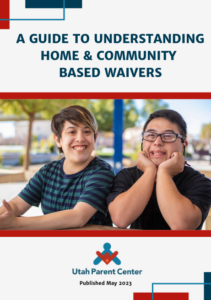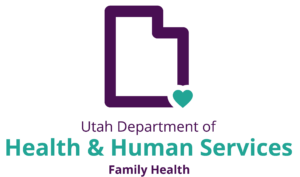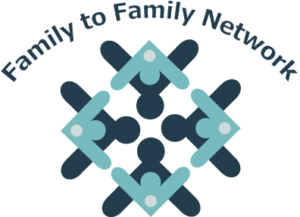The Division of Services for People with Disabilities (DSPD) is a department within the Utah Department of Health and Human Services. DSPD promotes opportunities and provides supports for people with disabilities to lead self-determined lives by overseeing home and community-based services (waivers) for more than 5,000 people who have disabilities. Support includes community living, day services, and supported employment services.
Important tips for navigating DSPD
1. The DSPD Waiting List
Current funding levels in the state of Utah for waivers are not high enough to meet the great demand. Because of the lack of funding, there is a waiting list for services. Individuals come off the waiting list based on their needs and the time they have spent on the list. The earlier a person can get on the list, the better.
Reasons to be on the waiting list:
1. While on the list, it is possible to receive temporary funding for services. If a person is not on the list, they will not receive DSPD funding.
2. The size of the wait list will educate the Governor, the Utah State Legislature, disability organizations, and DSPD about the great need for support and increased funding. A person’s place on the waitlist will constantly shift based on who is coming on and off the waitlist and as needs are evaluated.
The following frequently asked questions will link self-advocates and caregivers to information on the DSPD website.
Who Is eligible to be on the wait list?
What services are offered once I’m off the wait list?
How do I apply for services and to get on the wait list?
While waiting for services, the Family to Family Network (FtoFN) is designed to educate, strengthen, and support families of persons with disabilities. The FtoFN is a statewide parent support network run by volunteers. The Network provides:
- support through local meetings, either in-person or online
- information and referral
- family to family support
- tips on how to advocate for your family
- help to families who qualify or may be eligible for services from DSPD
- help to understand programs and services and how to work with service providers and support coordinators
- help to better understand how to choose or change your Support Coordinator. Use this guide to better understand the options.
 2. Congratulations, You are off the waiting list!
2. Congratulations, You are off the waiting list!
When someones comes off the waitlist, they will be contacted by a DSPD Transition Coordinator on an average of 2 months before waiver services start. During the 2 months, the temporary DSPD Transition Coordinator will conduct assessments and create an initial Person-Centered Support Plan (PCSP). They will establish a budget, identify and request needed services, and review ALL service codes available on the waiver. They will check to see if the person is enrolled in Medicaid and provide assistance if they are not enrolled. Medicaid needs to be approved before services will begin.
If a Support Coordinator (SCE) and service providers are not chosen, the DSPD Transition Coordinator will usually send out a search towards the end of the 2nd month (ISO = Invitation to Submit Offer) to help the individual find an SCE and staff. The DSPD Transition Coordinator will hand off assessments, budget, and PCSP to the SCE. A person will not be handed off to an SCE until at least one provider is selected and/or SAS (self-administered service) is in place. If SAS is selected, the individual will also need a fiscal agent.
The following resources may be helpful.
The History of Advocacy and Home and Community Based Waivers
Coming Off the Waitlist! A Guide to Understanding Home and Community Based Waivers (También disponible en español)
Utah Disability Provider Directory
Home and Community Based Waivers
Self-Administered Service (SAS) Book
Below are the paperwork processes for several of the DSPD fiscal agents that you may encounter. This list is not exhaustive, but represents the resources available to families who are navigating Employer and Employee paperwork for the SAS model:
Premier Fiscal Agent paperwork walkthrough video
Morning Sun Fiscal Agent paperwork walkthrough video
Morning Sun enrollment training links
Valentine Fiscal Agent paperwork walkthrough video
3. What is a Support Coordinator?
A Support Coordinator (SCE) works with individuals with disabilities and their families to develop service and support plans, based on the individual’s needs and wishes. These plans are referred to as Person-Centered Support Plans or PCSP’s. An SCE will also coordinate and monitor the services and supports that are provided.
An SCE’s responsibilities include:
- hold a PCSP to develop your plan, choose goals within your plan, monitor your progress, and to adjust your plan as necessary
- find and interview providers
- manage meeting invitation to all providers and team members
- oversee budget and billing and help to prioritize needs
- meet regularly with families/self-advocate
- follow-up on Medicaid renewal
- ensure medical services are met
- find disability resources
- approve payments to providers
- track & document progress
- advocate for you and your progress
The following resource may be helpful.
How to choose or change your support coordinator
4. What is a Person-Centered Support Plan and why is it important?
The Person-Centered Support Plan (PCSP) is a tool to individualize services and supports for an individual with a disability. DSPD uses the PCSP as a way to develop and document meaningful supports and goals, assign paid services, and support specific goals to work on during the year. A PCSP may seem similar to an Individualized Education Program (IEP).
A PCSP should be robust and comprehensive. Based upon the needs identified in the PCSP an individual will receive services. The PCSP should reflect not only the person’s needs and desires, but it should also maximize community integration. Review the PCSP to make sure the plan meets these criteria. The plan should also have a strategy in place for solving conflicts or disagreements during the PCSP process and should include conflict of interest guidelines.
The following resources may be helpful.
The Importance of Person-Centered Planning
The Basics: Waivers and Person-Centered Planning
A Parent’s Experience with Waivers and Person-Centered Planning
For detailed information, resources, and PCSP planning tools, refer to the Utah Parent Center’s Person-Center Planning resource page.
Or, refer to the UPC’s Transition University GREEN Community Living module that focuses on Self-Determination and Person-Centered Planning.
The Transition University Youth Workbook and the CHOICES book also has a GREEN section focusing on these topics.
The following resource may be helpful.
5. What is the Settings Rule and why is it important?
While the Settings Rule was established in 2014, it did not become mandatory until 2023. The Settings Rule is a vital part of the broader effort to promote community integration for people with disabilities. It prioritizes individual choice and full access to the community and offers individuals greater control over where they live, with whom, how they earn money, and how they spend their time, including controlling their own schedule. People with disabilities have the same rights to make choices and access the broader community.
The Settings Rule is in place to ensure an individual has choices in the services they receive and to make sure they can participate in the community in whatever ways they choose.
The following resource may be helpful.
6. What are my rights and how do I navigate restrictions?
If anyone not receiving Home and Community Based Services (HCBS or Medicaid waivers) is able to do something, then that individual receiving services has the same right. Anytime someone’s ability to do something, or any choice is limited, then a rights restriction must be implemented to put that limitation in place while they are receiving HCBS services.
The state of Utah has created a series of comprehensive rights restrictions documents for those receiving DSPD services. The first document is the Rights Restrictions for Providers document. This document details the role providers have in rights restrictions. Providers will be held accountable to what is outlined in this document through the ongoing monitoring compliance process of the HCBS Settings Rule.
There are five additional documents specifically designed for individuals served. These documents were created to be utilized during the person-centered processes to assist individuals served in understanding their rights when a rights restriction may be necessary.
The following resources may be helpful.
Rights Restrictions: What are my rights?
Rights Restrictions and House Rules
How Other People’s Restrictions Affect Me?




